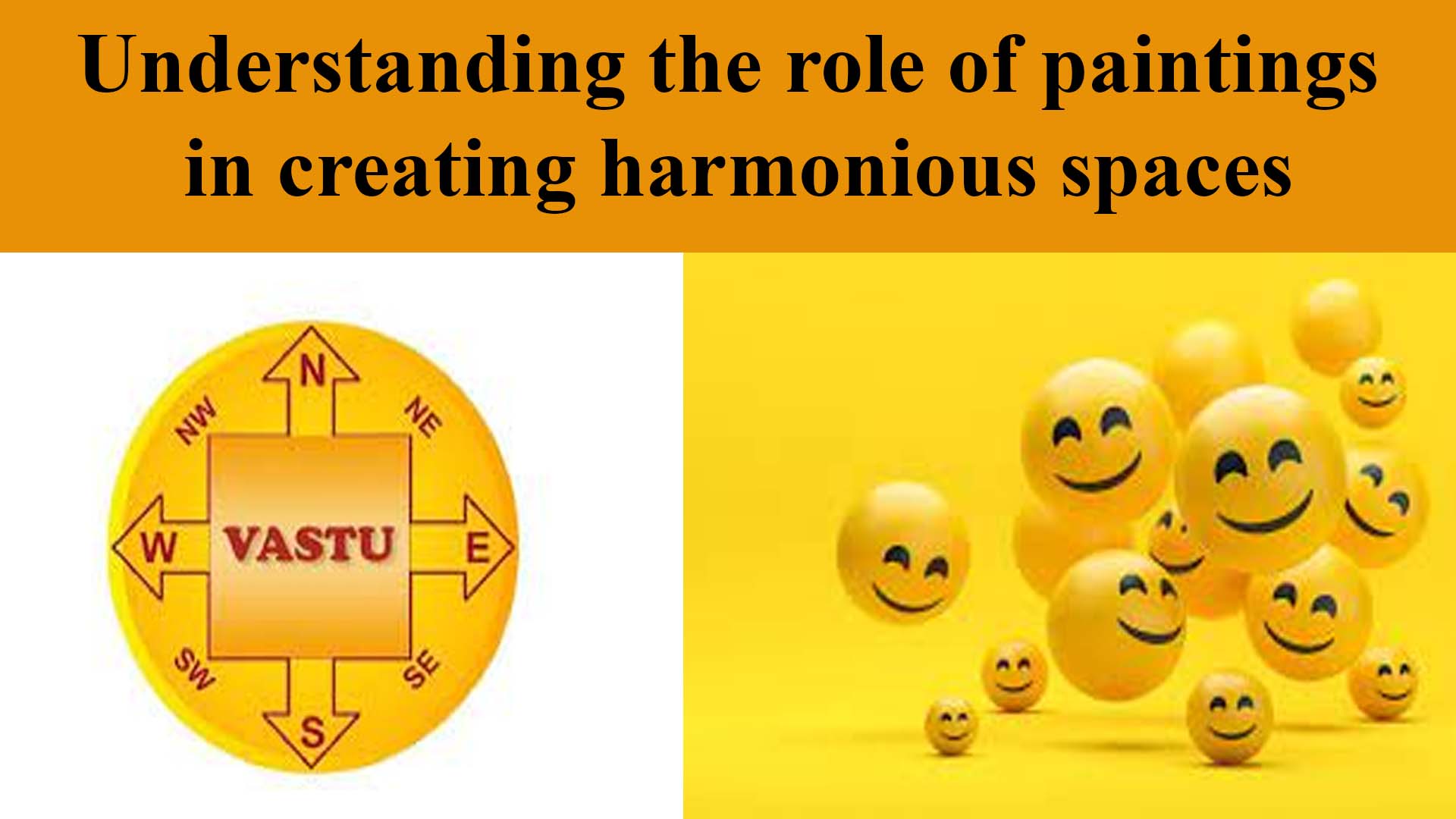
Understanding the role of paintings in creating harmonious spaces
In the realm of Vastu Shastra, an ancient Indian architectural science, the concept of harmony plays a pivotal role in creating a balanced and positive living environment. Among the various elements contributing to this harmony, paintings emerge as powerful tools that not only adorn our living spaces but also influence the energy flow within them. In this blog, we delve into the role of paintings in creating harmony as per Vastu principles.
Color Palette Matters:
Vastu emphasizes the significance of colors in influencing the energies within a space. Paintings, with their vibrant hues, contribute to the overall color scheme of a room. It is crucial to choose paintings that align with the specific Vastu-approved color recommendations for each room. For example, serene blues and greens in paintings can be ideal for bedrooms, fostering a calm and restful atmosphere.
Subject and Symbolism:
The subjects depicted in paintings can have a profound impact on the energy of a space. Vastu recommends choosing art that reflects positive themes such as nature, spirituality, and harmony. Avoid paintings depicting violence, sorrow, or disturbing scenes as they may disrupt the positive flow of energy within the home. Additionally, incorporating symbols like mandalas, lotus flowers, or images of deities can enhance the spiritual and positive vibrations in the space.
Placement Precision:
Where you place a painting is as crucial as the artwork itself. Vastu provides guidelines on the ideal placement of paintings to enhance the energy flow. Paintings depicting water elements are recommended in the north direction, while those with fiery or bold themes can find a suitable place in the south. The living room, being a central gathering space, is an excellent location for paintings that promote social harmony and unity.
Balance and Proportion:
Vastu encourages maintaining balance and proportion in all aspects of a living space, including art. Ensure that the size of the painting is proportionate to the wall it adorns. An overly large or small artwork can disrupt the visual harmony of a room. Grouping paintings in odd numbers is also considered favorable, creating a sense of completeness and balance.
Nature's Elements in Art:
Incorporating the five elements of nature (earth, water, fire, air, and space) in paintings can enhance the overall harmony. Paintings that depict landscapes, seascapes, or natural scenes bring the earth element, while vibrant abstract art may represent the fire element. Consider the overall elemental balance in your home to create a harmonious living space.
Conclusion:
In the intricate tapestry of Vastu Shastra, paintings emerge as integral threads, weaving together a harmonious living environment. By conscientiously selecting artworks that align with Vastu principles, one can not only enhance the aesthetic appeal of their home but also contribute to the positive flow of energies. The strokes of a brush on canvas, when guided by Vastu wisdom, become a symphony of harmony, creating a space that nurtures well-being and positivity.
Q&A:
Q1: How do colors in paintings contribute to creating harmony in accordance with Vastu Shastra?
A1: Colors play a crucial role in Vastu Shastra as they influence the energy within a space. Paintings with specific color palettes can align with Vastu recommendations for each room. For example, serene blues and greens are ideal for bedrooms, fostering a calm atmosphere, while vibrant and bold colors may be suitable for areas that require energy and activity.
Q2: Why is the subject and symbolism of paintings important in Vastu?
A2: The subject and symbolism of paintings significantly impact the energy of a space. Vastu advises choosing art with positive themes like nature, spirituality, and harmony. Avoiding paintings with negative or disturbing themes is crucial. Additionally, incorporating symbols such as mandalas or depictions of deities can enhance the spiritual and positive vibrations within a home.
Q3: What guidelines does Vastu Shastra provide for the placement of paintings?
A3: Vastu provides specific guidelines for the placement of paintings based on their themes and the direction of the room. For example, paintings depicting water elements are recommended in the north direction, while fiery or bold themes may find a place in the south. The living room, being a central gathering space, is suitable for paintings promoting social harmony and unity.
Q4: How does maintaining balance and proportion in paintings contribute to Vastu principles?
A4: Vastu emphasizes the importance of balance and proportion in all aspects of a living space, including art. The size of a painting should be proportionate to the wall it adorns to maintain visual harmony. Grouping paintings in odd numbers is considered favorable, creating a sense of completeness and balance in the overall aesthetic of the room.
Q5: Why is it recommended to incorporate the five elements of nature in paintings according to Vastu?
A5: Incorporating the five elements of nature (earth, water, fire, air, and space) in paintings helps enhance the overall harmony of a space. Different paintings represent different elements, and balancing these elements contributes to a positive and harmonious living environment. For instance, paintings depicting landscapes or natural scenes bring the earth element, while abstract art may represent the fire element.
Q6: How do paintings contribute to the overall well-being and positivity of a home in the context of Vastu Shastra?
A6: Paintings, when chosen and placed thoughtfully according to Vastu principles, contribute to the overall well-being and positivity of a home. They become integral in creating a harmonious living environment by influencing the energy flow within the space. The positive themes, balanced placement, and incorporation of natural elements in paintings all play a role in fostering a sense of balance, tranquility, and positive energy within the home.

Comments : (0)